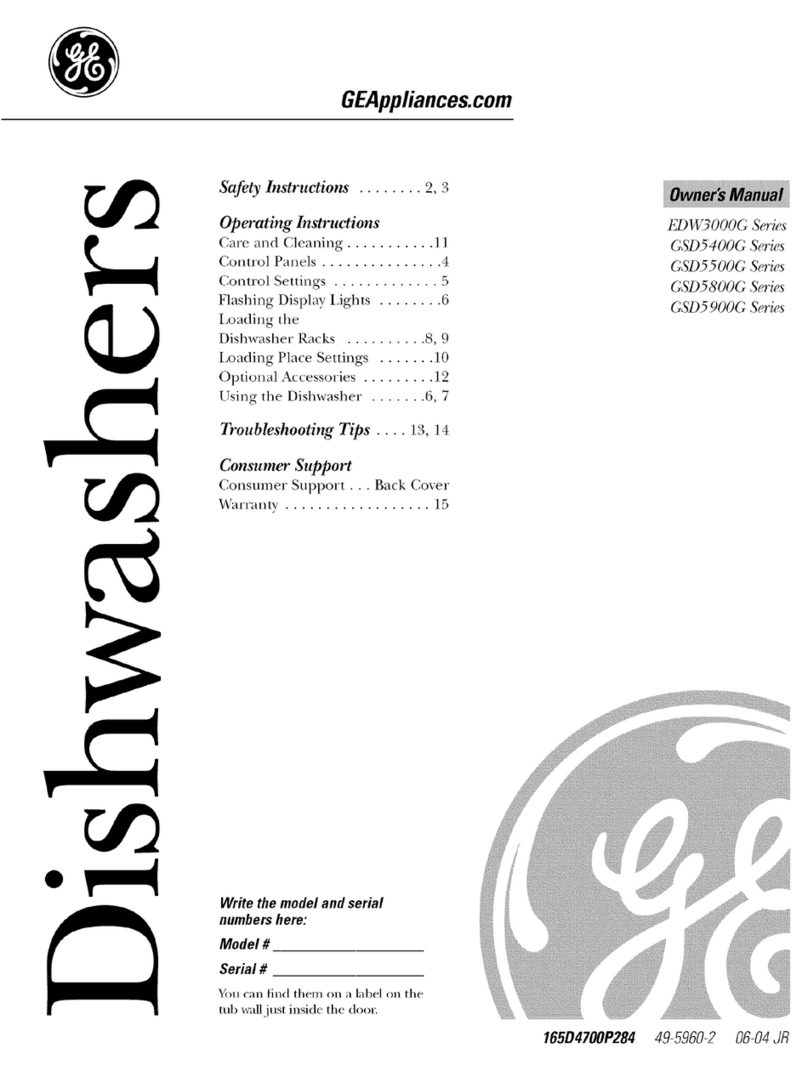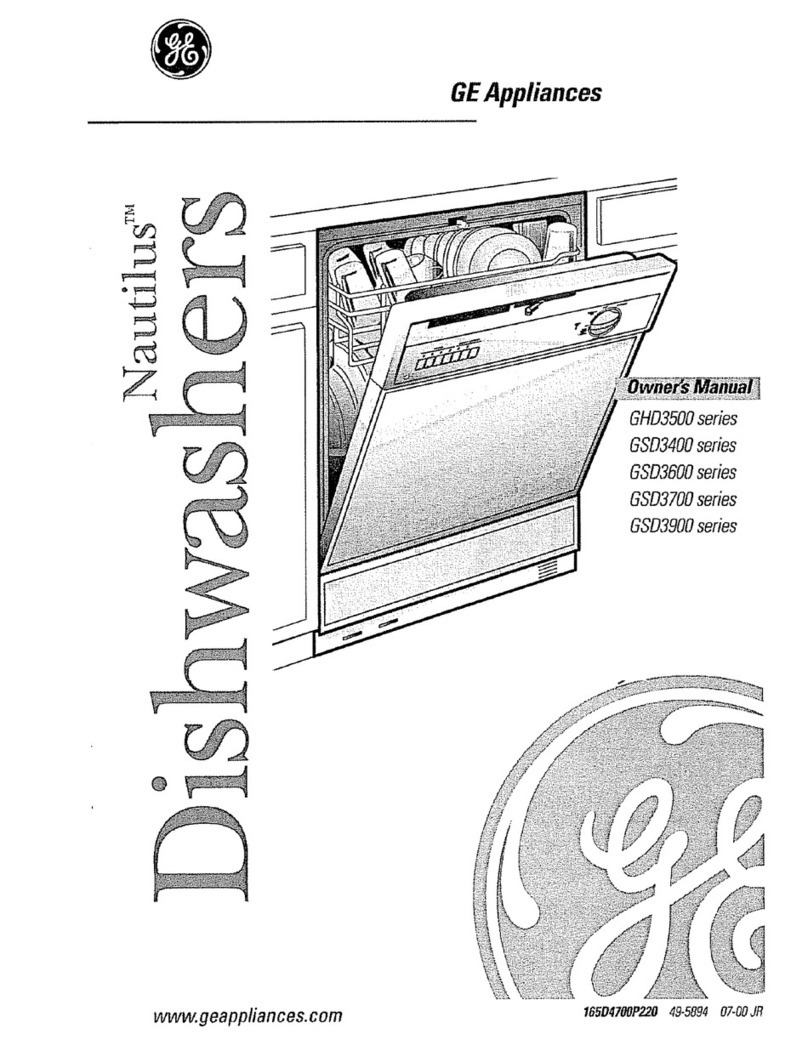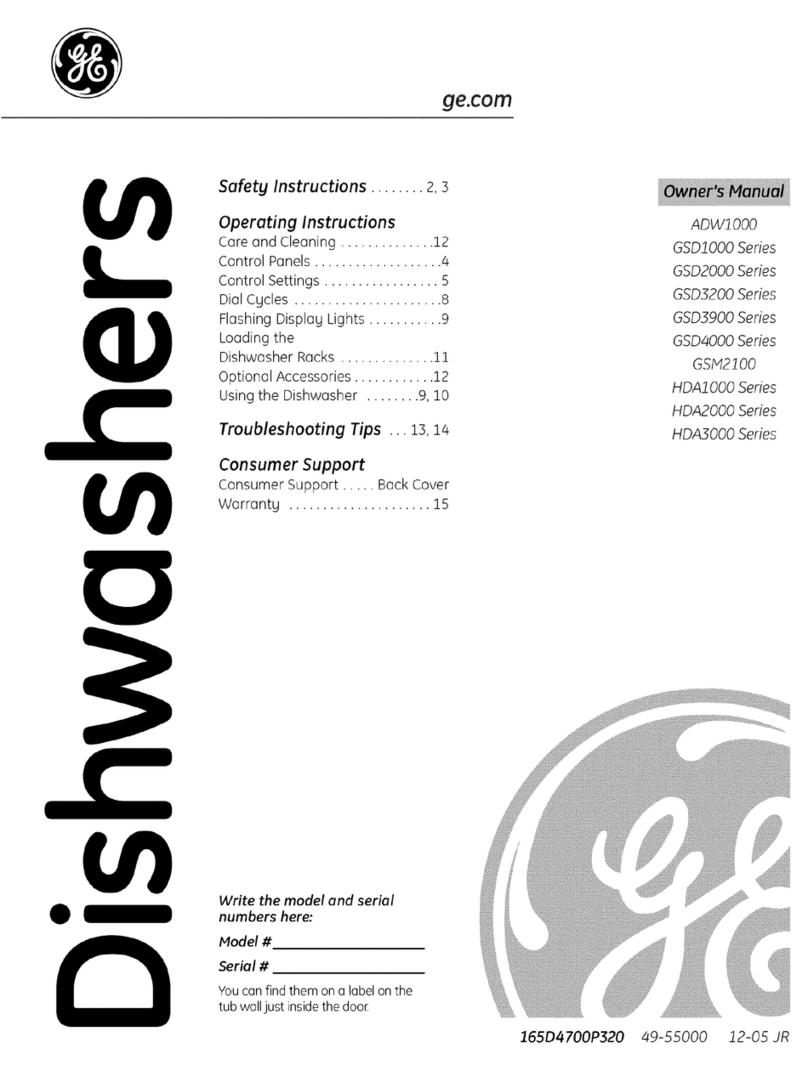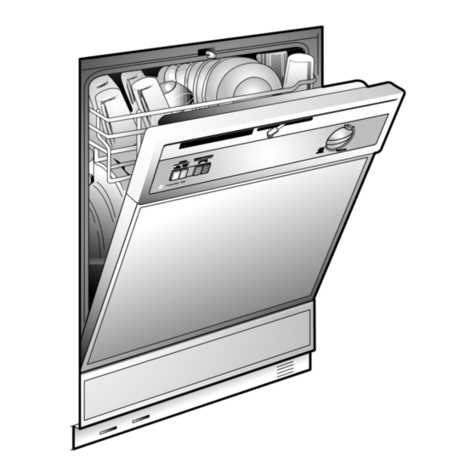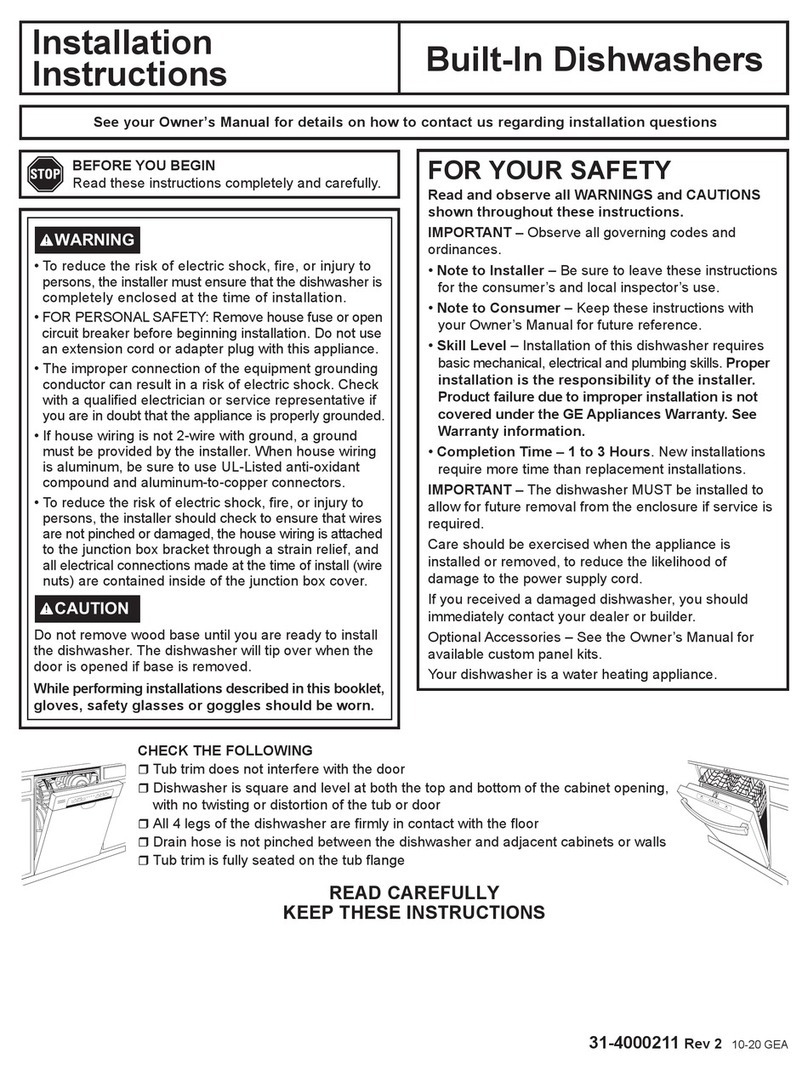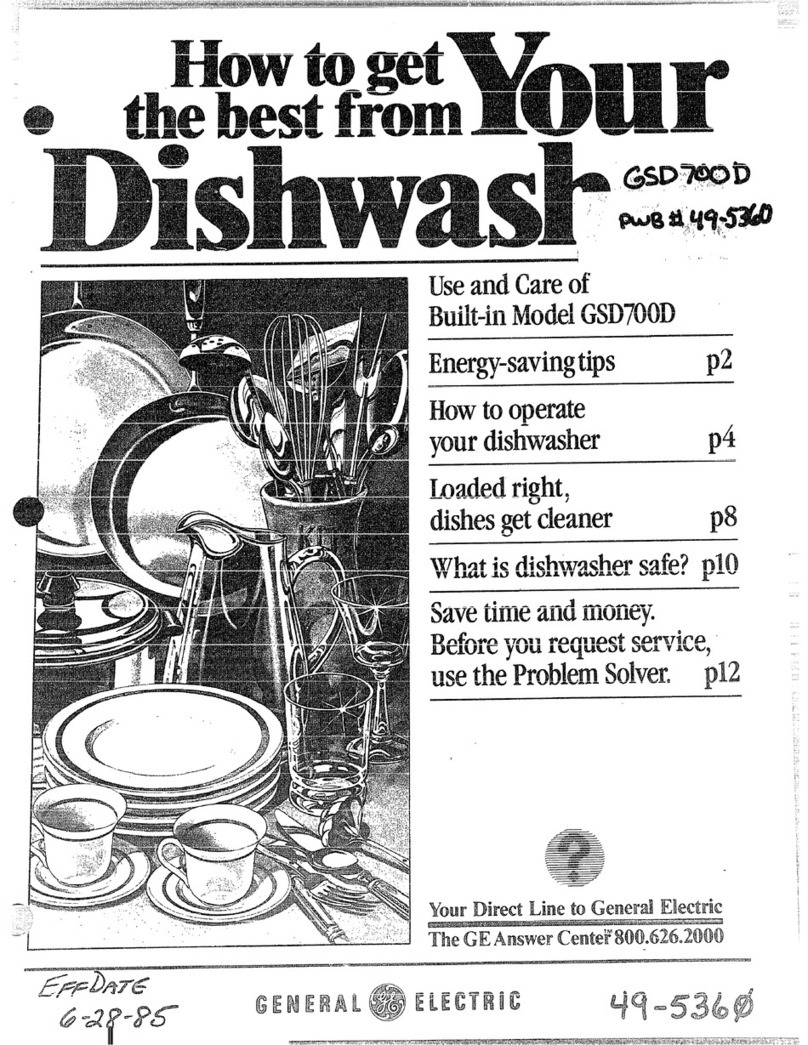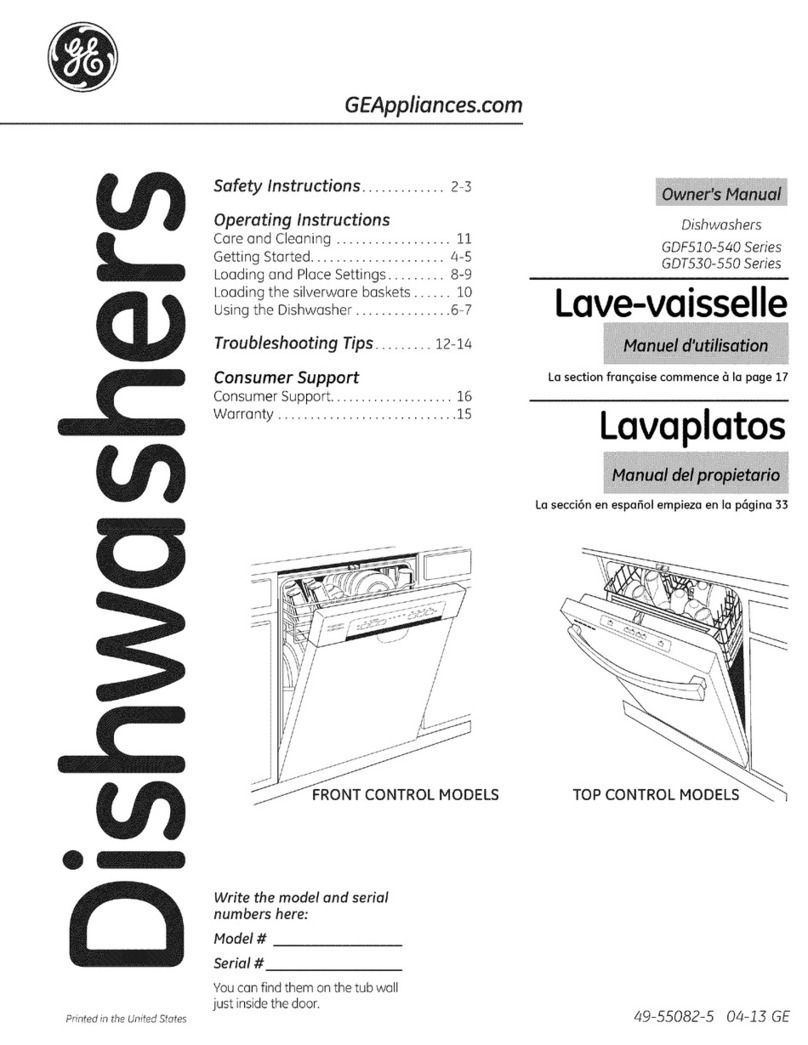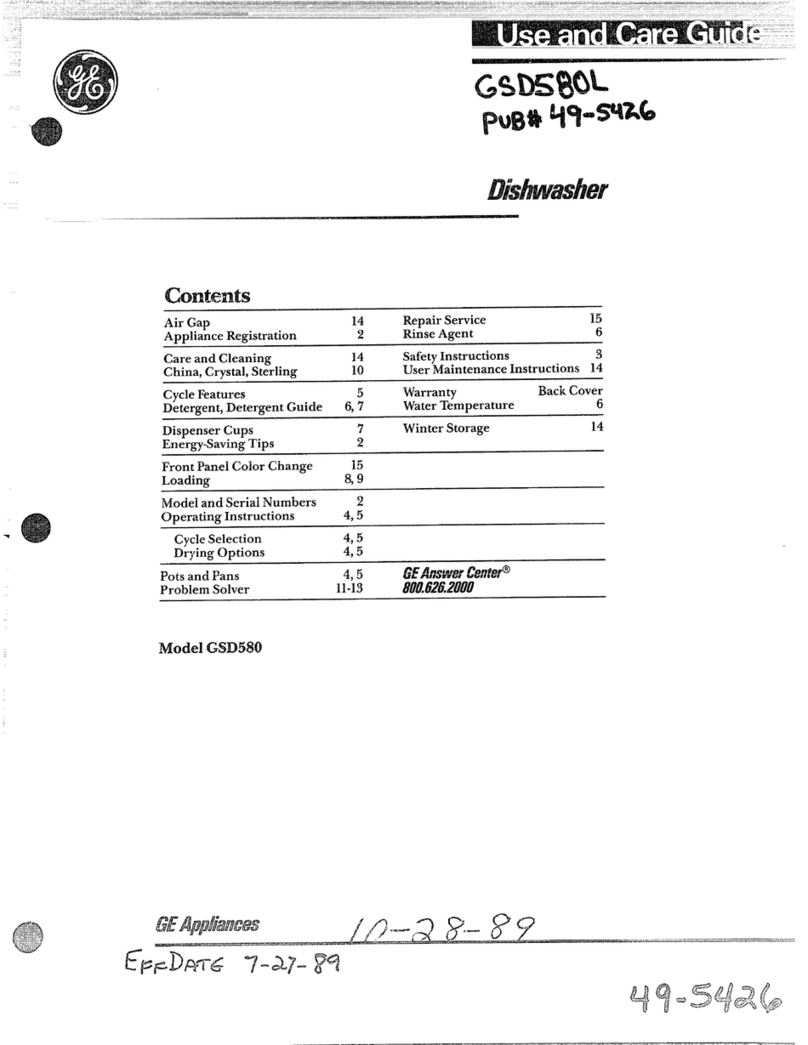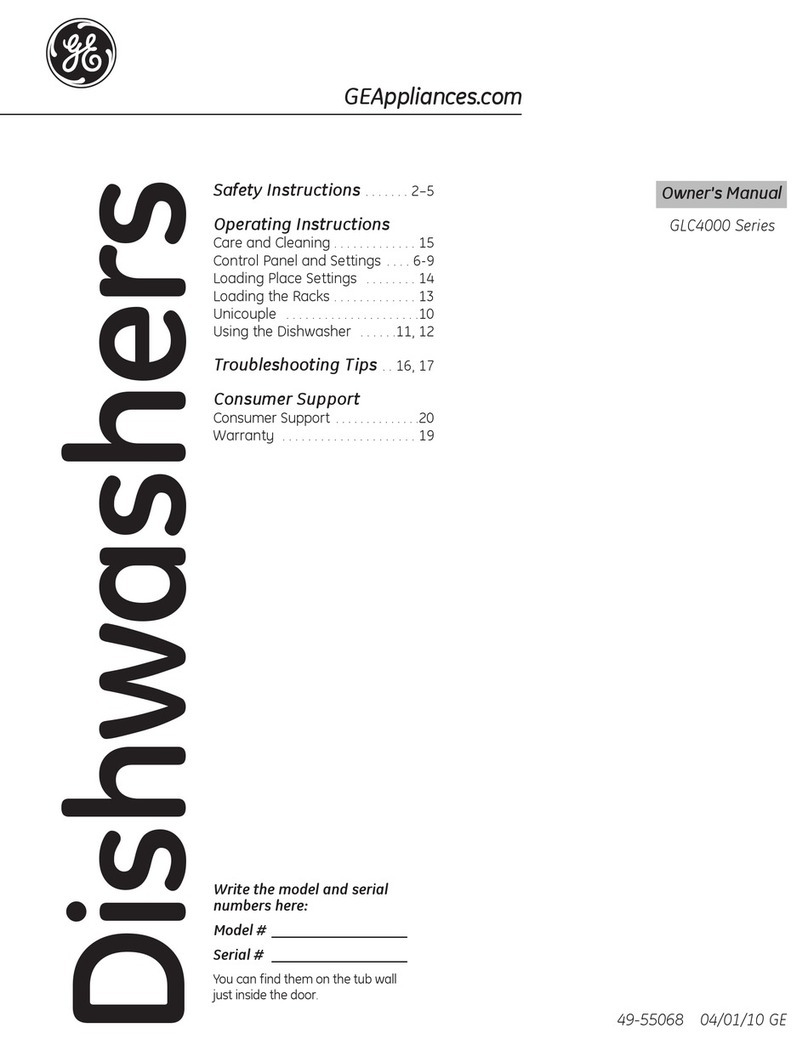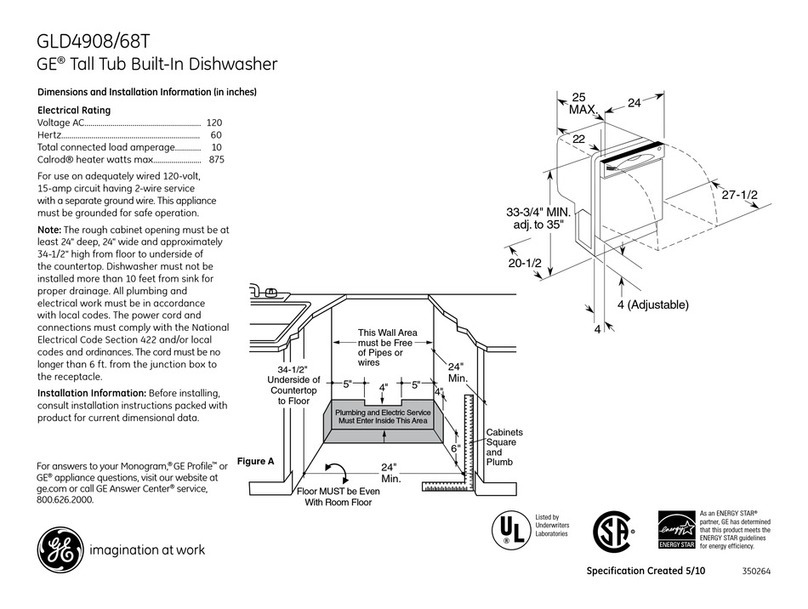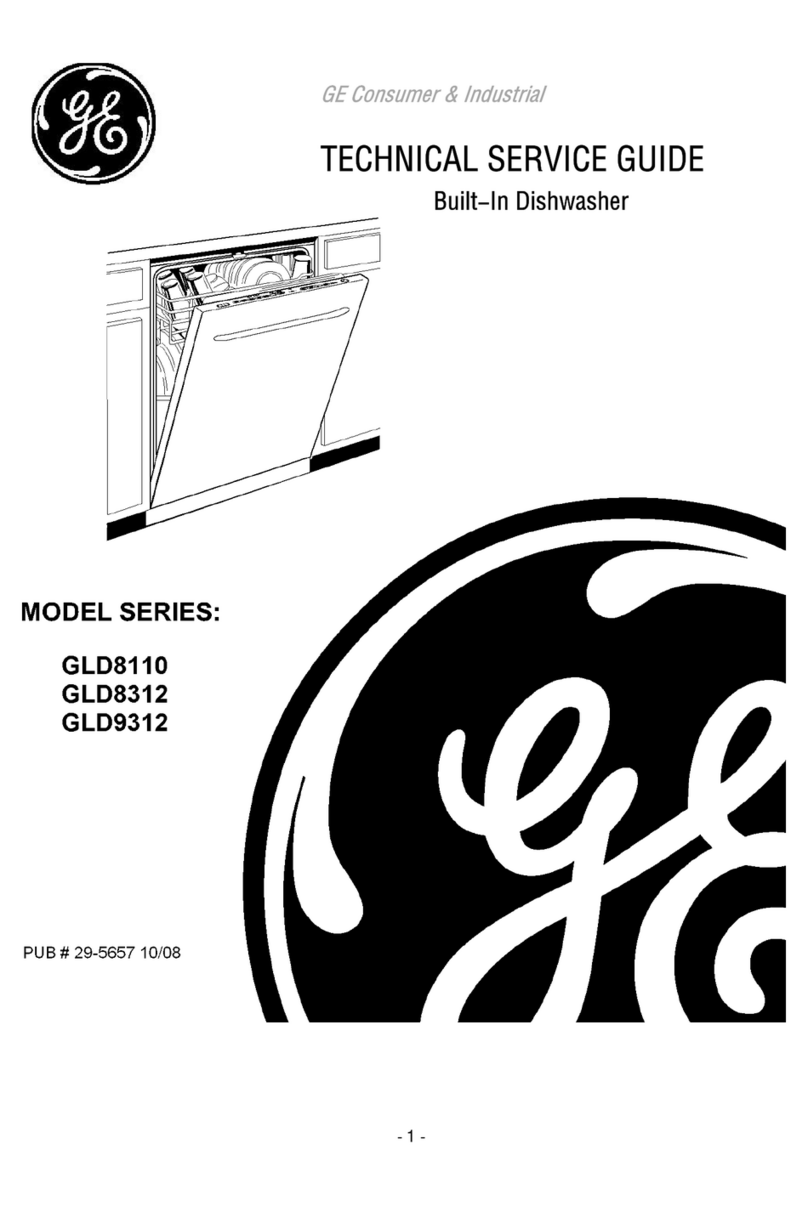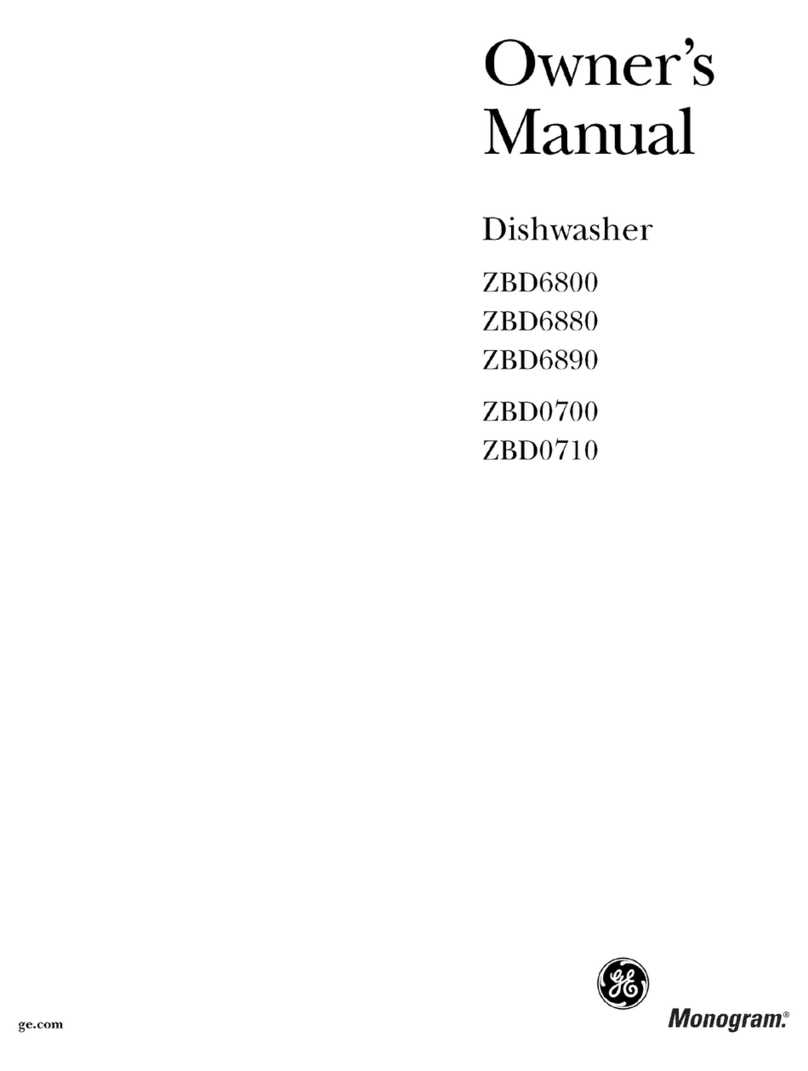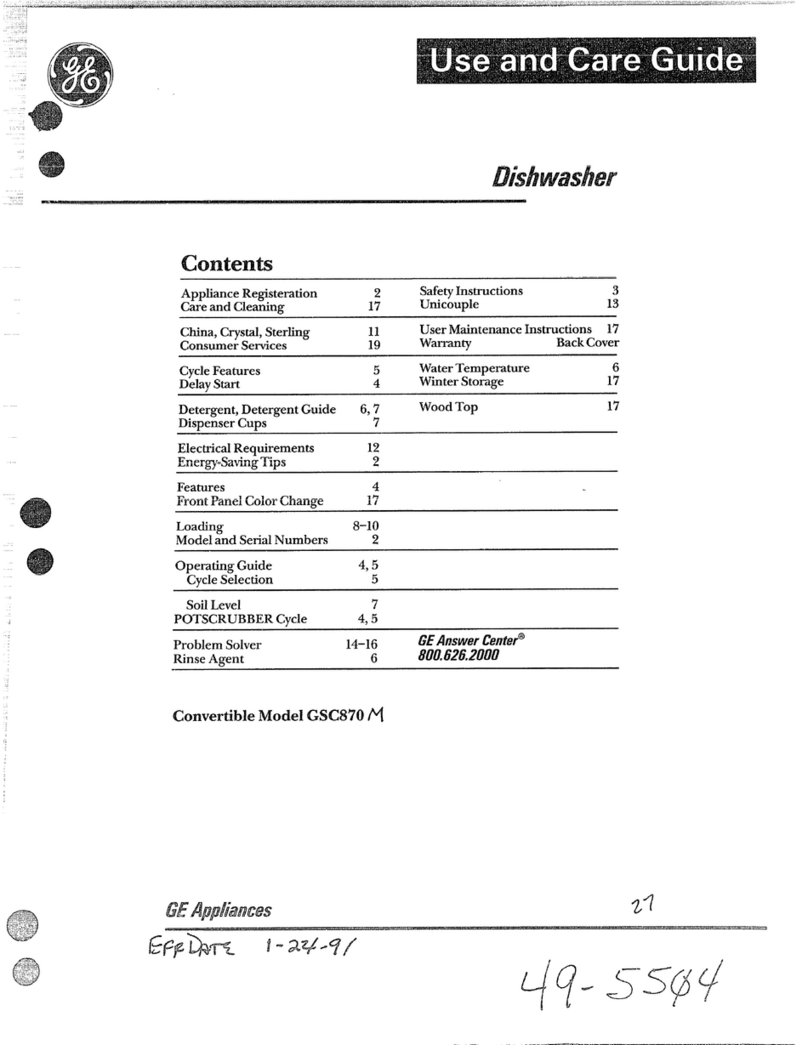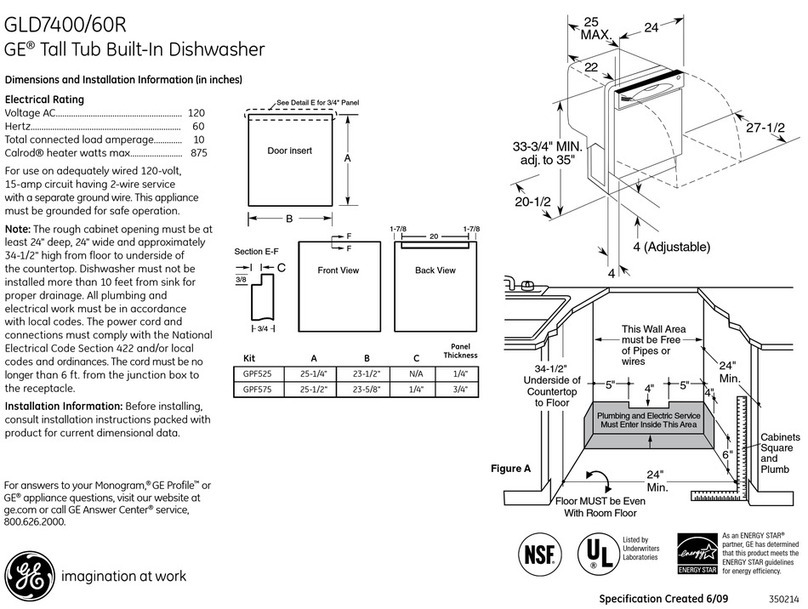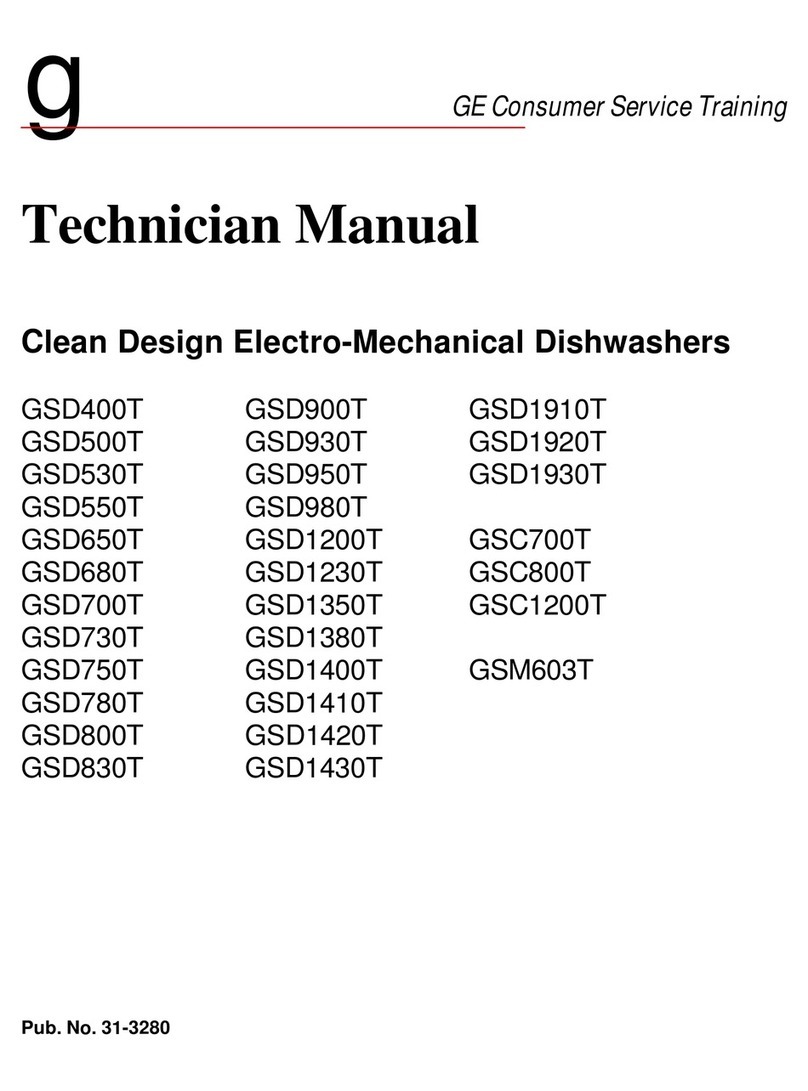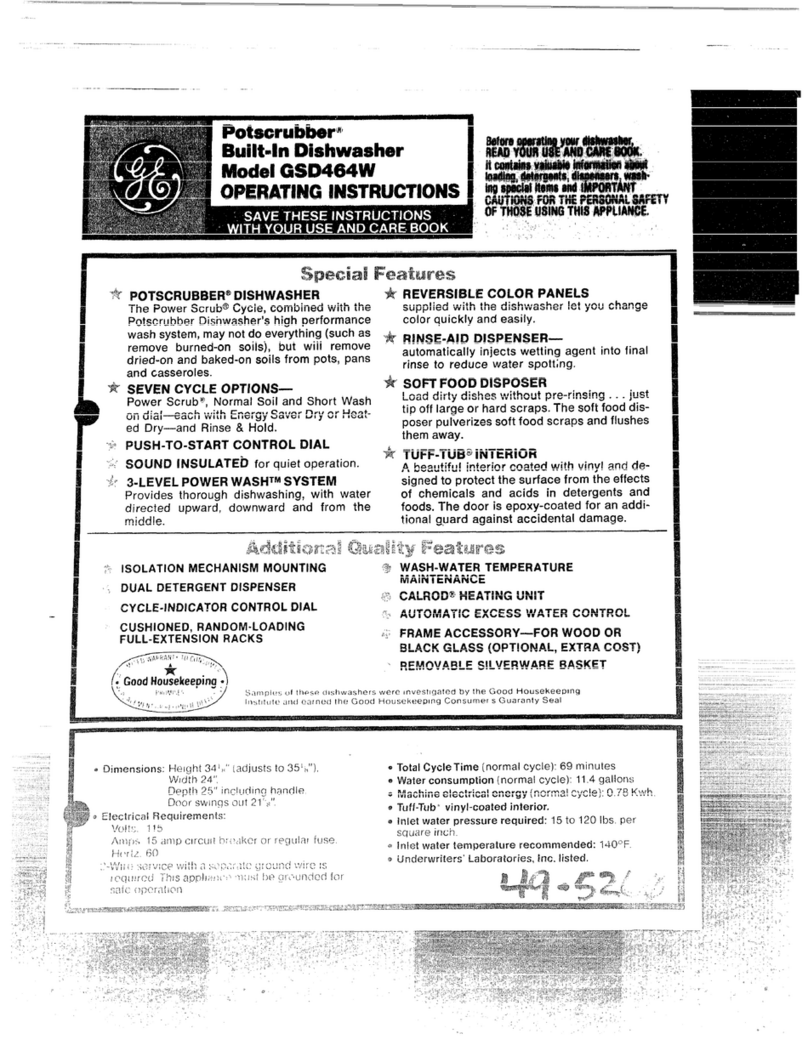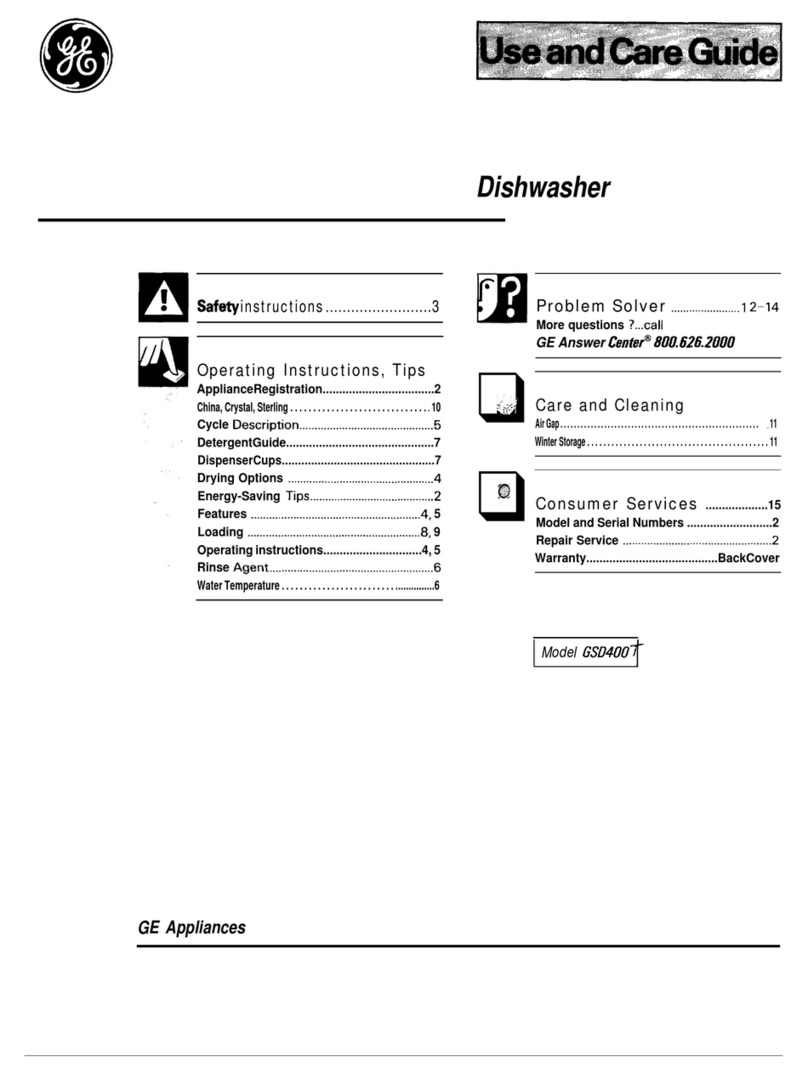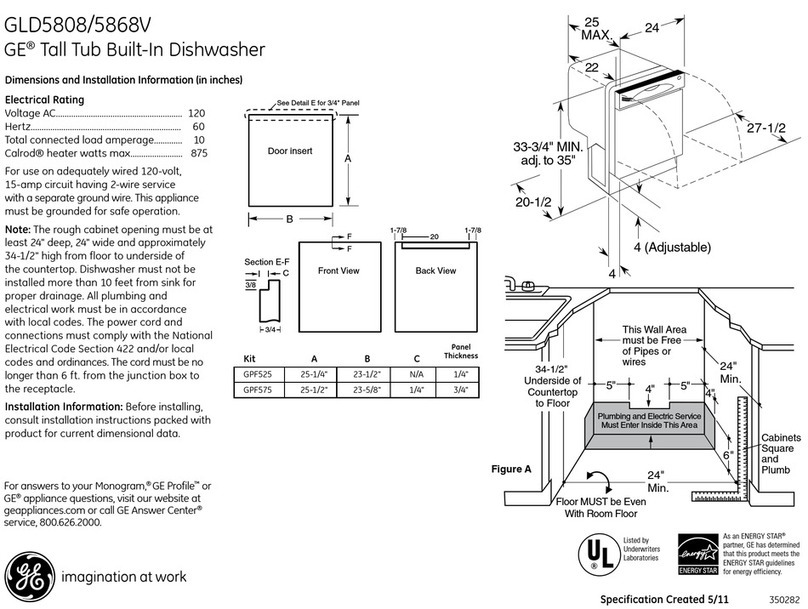—— TemperatureSemsorsystem
Toget dishesclean and dry you
needhotwater.Tohelpyouget
wateroftheproper temperature,
yourdishwasherhasawaterheating
featurethatautomaticallysenses
thetemperatureofthe waterin the
washcycleandheatsit, if necessary,
tothe proper temperature.This
waterheatingfeaturemayallow
youto turn downyourhousehold
waterheater and saveenergy if
you’rewillingto let thedishwasher
run alittlelonger whileitheats
waterto the proper temperature.
For goodwashingand drying, the
enteringwatermust be atleast
120”F.Topreventdish damage,
inletwate; shouldnotexcee~ 150”F.
How to test watertemperature:
Check your watertemperature
insideyour dishwasherwith a
candy or meat thermometer.
Let the dishwasherrun through
one filland pump out cycle,then
letthe dishwasherfill with water
the second time.
When youhear the waterstop
filling, unlatchthe door and ;lowly
open it.
Measure the temperature of the
water in the bottomofthe tub this
way:
t
Removethe silverware basket and
place acandy or meat thermometer
in the watertowards the middle of
the tub. If the temperature is less
than 120”F,youwillnotgetgood
washingresults.Higherwater
temperatureisneededtodissolve
greaseand activate powder
detergents.
Helpfulhints:If outside
temperaturesareunusuallylow,or
ifyourwatertravelsalongdistance
fromwaterheatertodishwasher,
youmayneed tosetyourwater
heater’sthermostatup. If youhave
notusedhot waterforsometime,
the waterin the pipeswill be cold,
Turnon the hotwaterfaucetat the
sinkand allowitto run untilthe
waterishot. Then startthe
dishwasher.If you’verecentlydone
laundryor run hotwaterfor
showers,giveyourwaterheater
timeto recoverbeforeoperatingthe
dishwasher.
Toimprovewashabilityif the water
islessthan 120”Fandyoucannot
adjustyourwaterheater: Selecta
longercycleand fillboth detergent
cupsatleastha~f-fullwith detergent.
Howtousearinseagent.
Arinseagentmakeswater flow
offdishesquickerthan usual. This
lessenswater spottingand makes
drying faster,too.
For bestdishwashingperformance,
use ofarinse agentsuch as .TET-
DRYbrand is recommended.
Rinseagentscome in either liquid
or solidform. Yourdishwasher’s
dispenseruses theliquid form.
How to fill the rinseagent
dispenser.Unscrew the cap. Add
the liquidrinse agentuntil itjust
reachesthe bottomofthe lip inside
the dispenser opening. Replacethe
cap. The dispenser automatically
releases the rinse agent intothe
final rinse water.
H’youaccidentally spill: Wipe
up the rinse agentwith adamp
cloth. Don’tleavethe spill in the
dishwasher. It can keep your
detergent from working.
H’you can’tfindanyrinse agent,
write:
13ENCKISER CONSLJMER
PRODUCTS, INC.
(“JET DRY”)
411W, Putnam Ave.
Greenwich, CT 06830
Yourdishwasher’srinseagent
containerholds4% ounces.This
shouldlast about3months.Fill
as needed. Do notoverfill.
HowtoChooseandlxx?
detergent.
First,useonlypowderor liquid
detergentsspecificallymadefor
usein dishwashers.Othertypes
wiUcauseoversudsing.
Second, checkthephosphate
content.Phosphatehelpsprevent
hard-watermaterialsfrom forming
spotsor fi~mon your dishes. If
yourwater is hard (7 grains or
more), yourdetergenthas to work
harder. Detergentswith ahigher
phosphatelev;l willprobab~ywork
better.If the phosphatecontentis
low(8.7%orless), you’llhaveto
use extradetergentwith hard water.
Yourwater department can te~l
you how hard yourwater is. So
can yourcounty extensionagent.
Or yourarea’swater softener
company.Just call and ask them
howmany “grains of hardness”
there are in yourwater.
How much detergent should you
use? That depends. Is your water
“hard” or “soft”? With hard water,
youneed extra detergentto get
dishesclean. With softwater, you
need less detergent.
Toomuch detergent with softwater
not only wastes money, it can be
harmful. It can cause apermanent
cloudiness ofglassware, called
“etching.” An outside layer ofglass
is etched away!Of course, this
takes some time. But why take a
chance when it’seasy to -findout ‘-=
(>
.’5.
